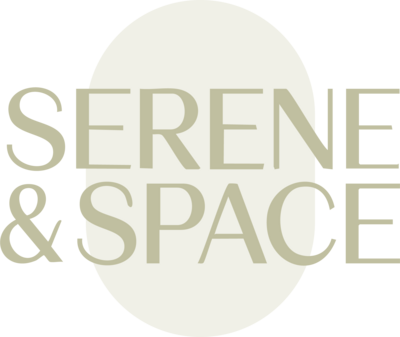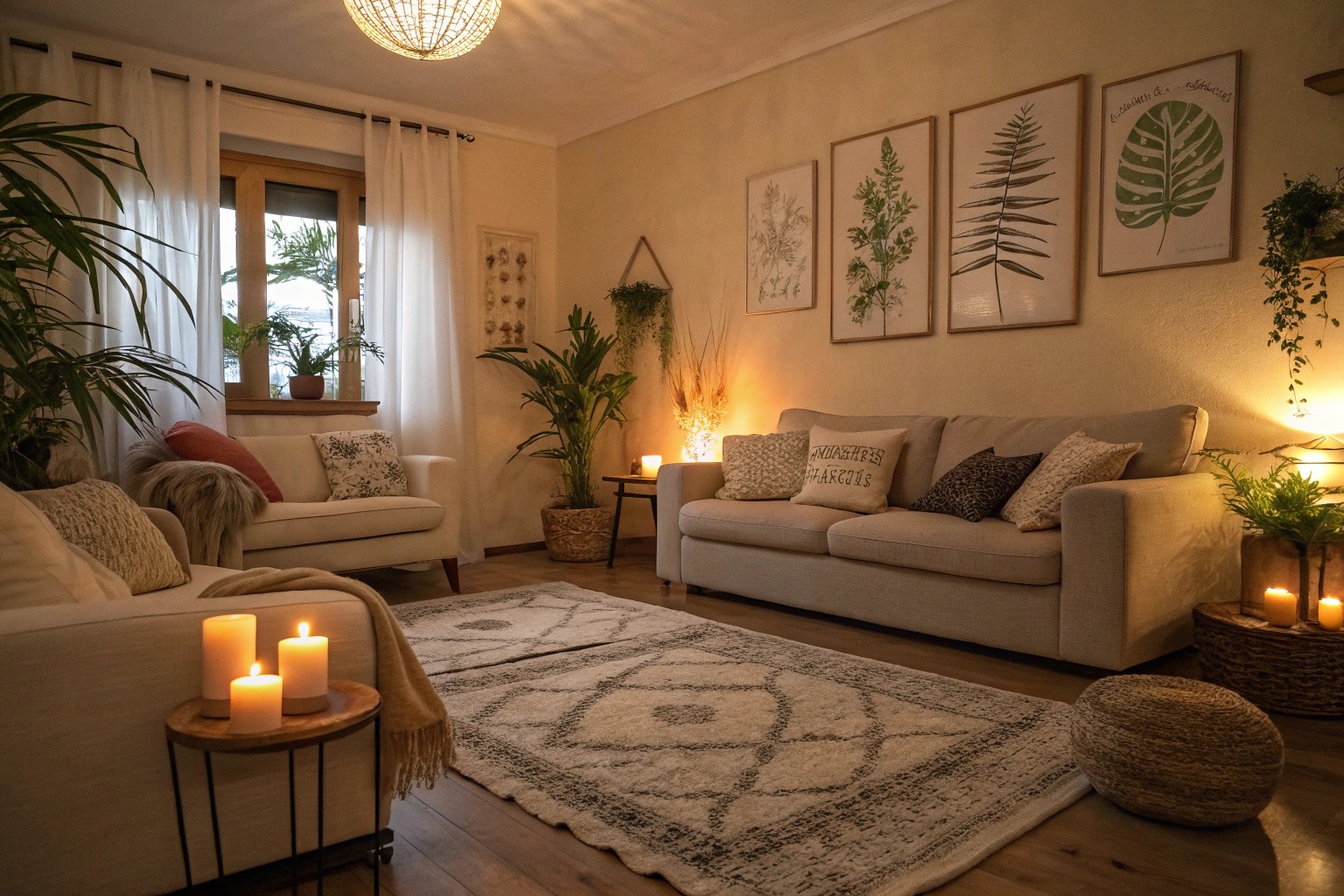Creating environments that support recovery and emotional well-being requires a thoughtful approach to color, texture, and form that goes beyond aesthetics. The spaces we inhabit during vulnerable times can either accelerate healing or inadvertently add stress, making intentional design choices essential for fostering restoration and peace.
Understanding the Psychology of Healing Spaces
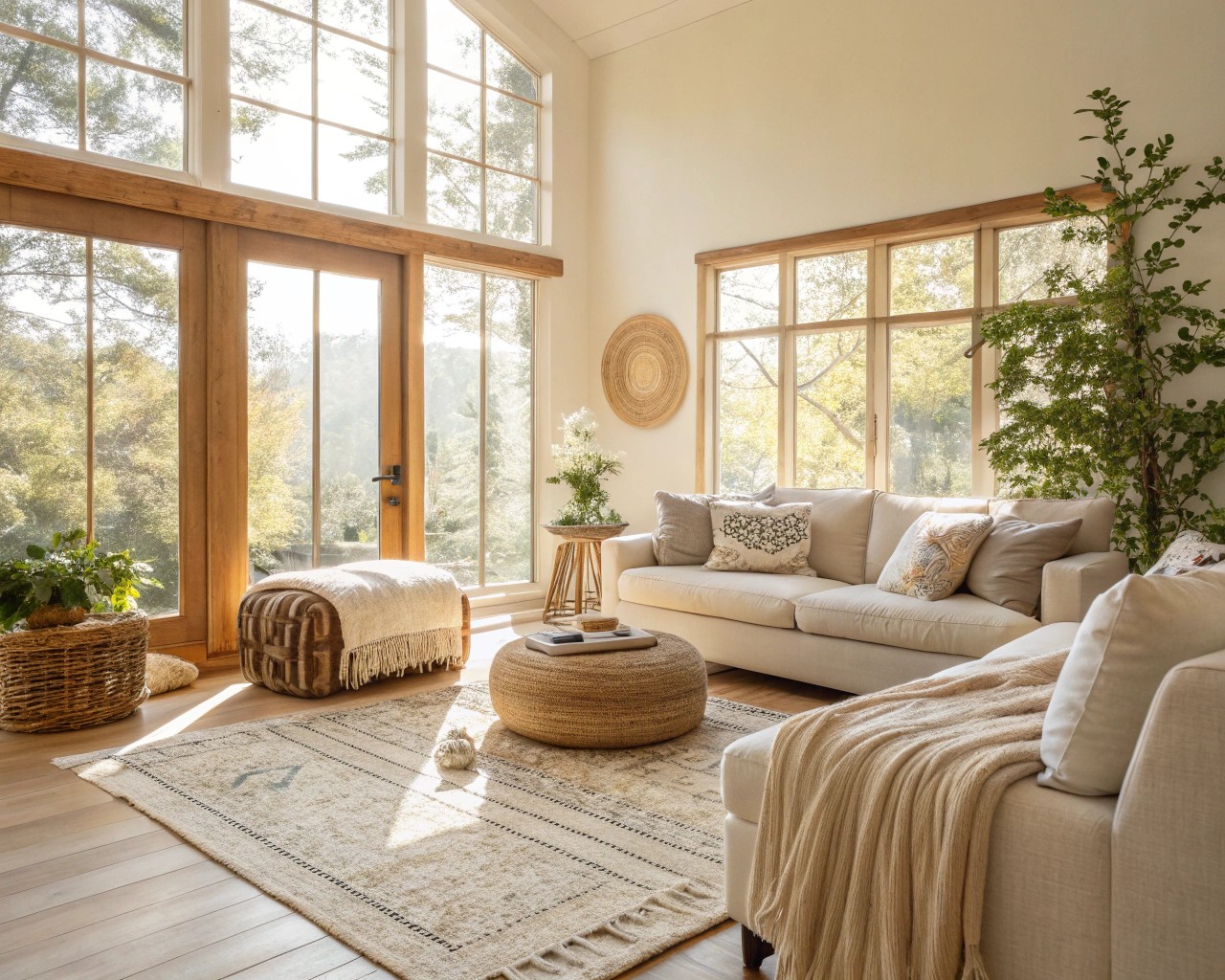
When designing for healing, every element must serve a therapeutic purpose. Research consistently shows that our physical environment directly impacts our psychological state, influencing everything from stress hormone levels to recovery times. The goal is creating spaces that feel safe, nurturing, and restorative without appearing clinical or institutional.
I’ve observed that successful healing spaces share three fundamental characteristics: they reduce overstimulation, provide a sense of control, and connect occupants with nature’s calming rhythms. These principles guide every decision, from wall colors to furniture placement, ensuring that the environment actively supports rather than hinders the healing process.
The most effective healing environments incorporate what researchers call “soft fascination”—gentle, engaging elements that capture attention without demanding intense focus. This allows the mind to rest while remaining pleasantly occupied, creating ideal conditions for restoration and recovery.
The Power of Soft Tones in Therapeutic Design
Calming Blues: Nature’s Tranquilizer
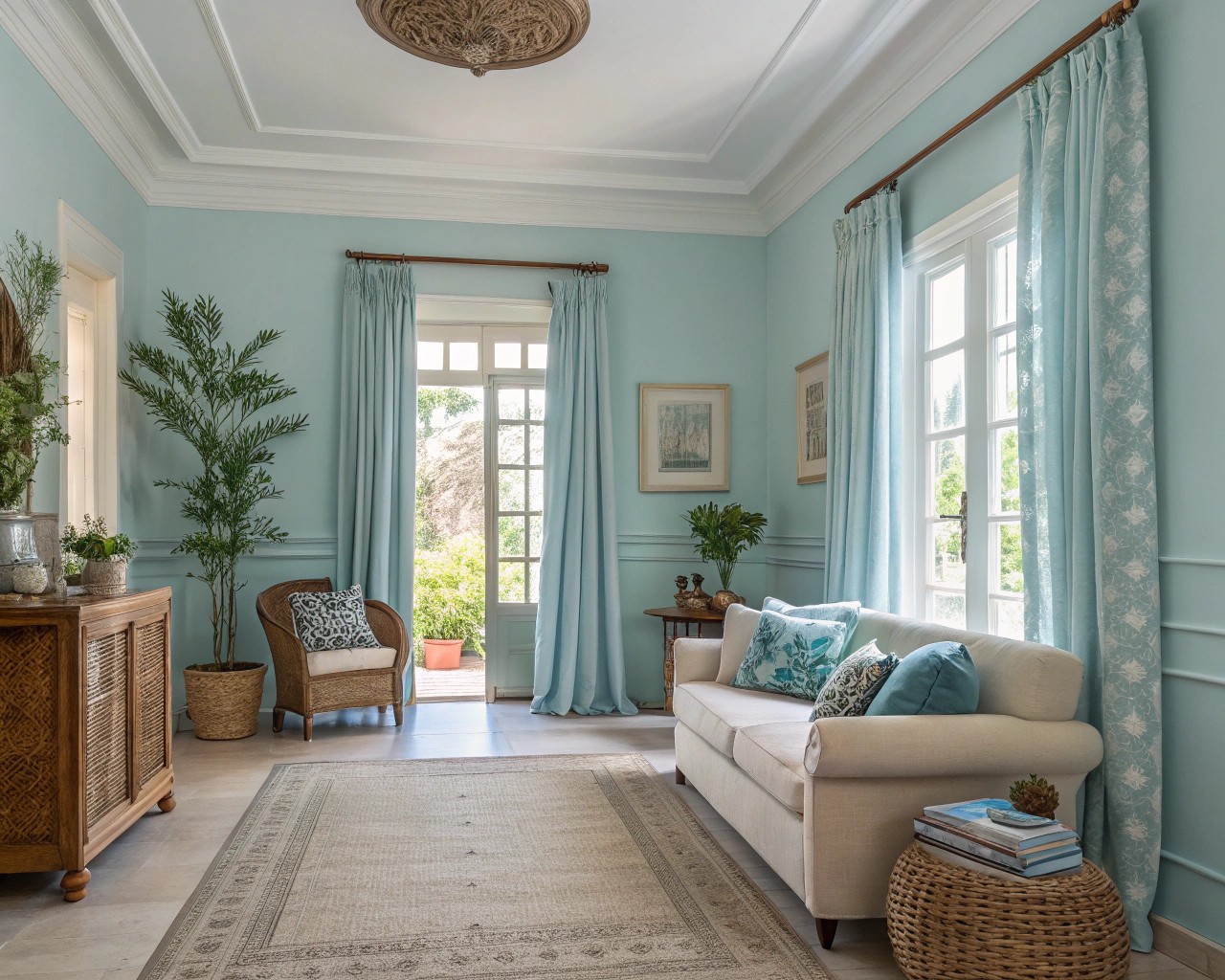
Blue stands as the cornerstone of healing color palettes, particularly in lighter, softer variations. These hues naturally lower blood pressure and heart rate while promoting the production of calming neurotransmitters. However, not all blues work equally well in healing spaces.
Recommended Blue Tones:
- Powder blue (#B8D4E3): Creates expansive, airy feelings
- Sage blue (#91A3B0): Combines blue’s calm with green’s restoration
- Mist blue (#C1D3D8): Provides gentle visual rest
- Whisper blue (#E6F0F3): Nearly neutral yet subtly soothing
When implementing blue in healing spaces, consider the quality of natural light. North-facing rooms benefit from warmer blue tones that counteract the cool natural light, while south-facing spaces can handle cooler blues without feeling stark.
Restorative Greens: Connecting with Nature’s Rhythm
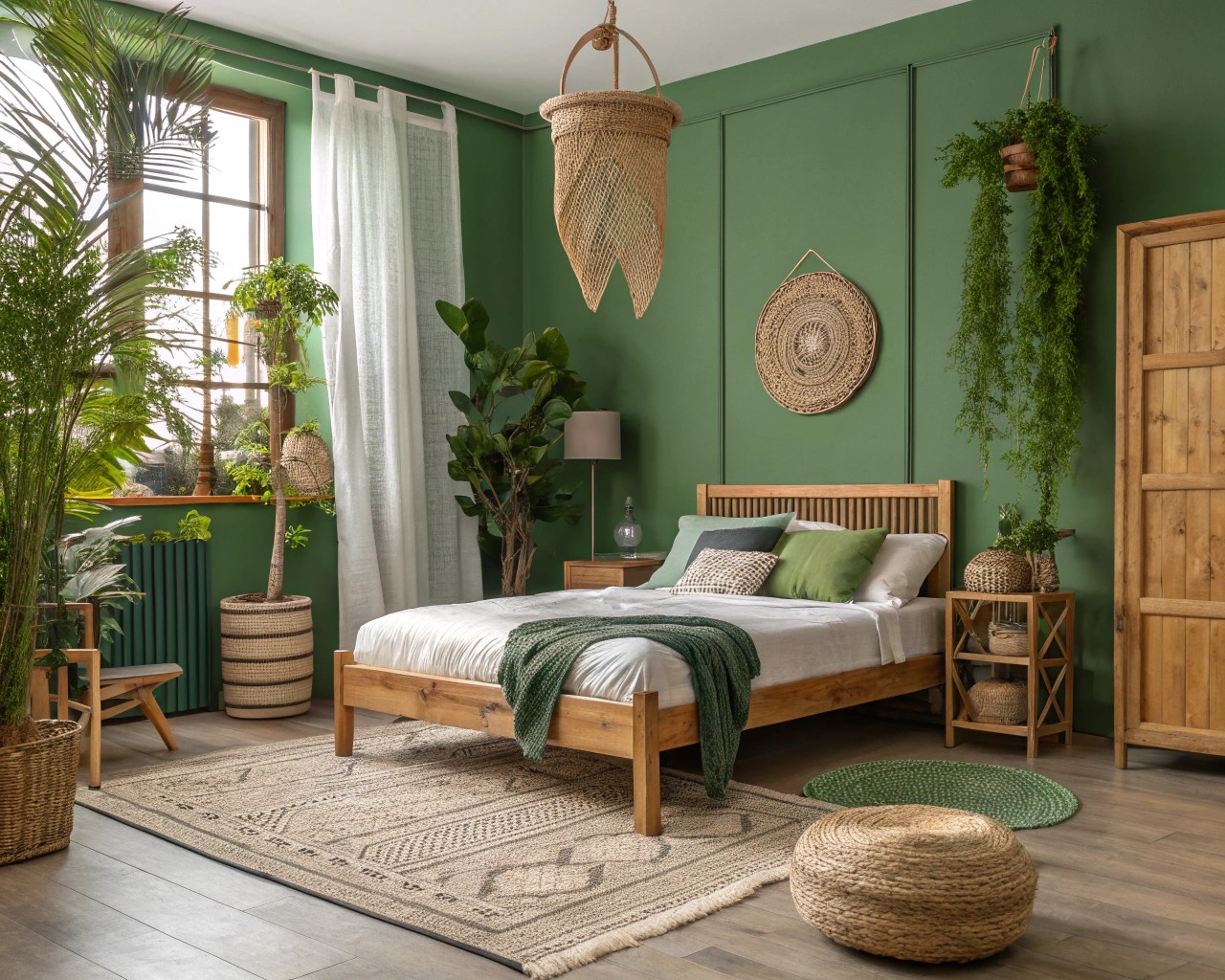
Green represents the most psychologically restful color in the spectrum, requiring no adjustment by the human eye and naturally reducing eye strain. This makes green particularly valuable in spaces where people spend extended periods during recovery.
Therapeutic Green Applications:
| Green Tone | Hex Code | Best Use | Psychological Effect |
|---|---|---|---|
| Sage Green | #999E88 | Bedrooms, quiet areas | Grounding, peaceful |
| Misty Olive | #9CA796 | Living spaces | Gentle energy, hope |
| Soft Mint | #B8D8C7 | Bathrooms, treatment rooms | Fresh, clean, renewing |
| Forest Whisper | #647064 | Accent walls, reading nooks | Secure, protected |
Earth Tones: Grounding and Security
Natural earth tones create psychological anchoring, helping individuals feel stable and secure during periods of vulnerability. These colors work particularly well as foundational elements, providing a neutral backdrop that supports rather than competes with healing activities.
Essential Earth Tone Palette:
- Warm beige (#CBCEC5): Universal calm, works with any accent
- Soft taupe (#A3998C): Sophisticated comfort
- Gentle grey (#818D81): Modern serenity without coldness
- Cream (#F5F2E8): Soft brightness without harshness
Easy Textures That Comfort and Heal
The Science of Tactile Comfort

Touch significantly impacts our nervous system, with soft textures activating parasympathetic responses that promote healing. When selecting materials for healing spaces, prioritize those that invite gentle contact while maintaining hygiene and durability.
Natural Fiber Integration
Natural fibers provide both psychological and physical comfort. Cotton, linen, and bamboo fabrics feel welcoming while allowing skin to breathe naturally. These materials also age gracefully, developing character rather than showing wear in harsh ways.
Recommended Natural Textures:
- Organic cotton: Soft, breathable, easy to clean
- Linen blends: Relaxed texture, improves with washing
- Bamboo fibers: Naturally antimicrobial, silky feel
- Wool blends: Temperature regulating, naturally resilient
Sound-Absorbing Comfort
Healing spaces benefit enormously from materials that reduce noise pollution and create acoustic comfort. Soft textures naturally absorb sound, creating the quiet environments essential for rest and recovery.
Acoustic Comfort Solutions:
- Upholstered headboards in bedrooms
- Fabric wall panels in living areas
- Heavy curtains for window treatments
- Area rugs to soften footstep sounds
- Cushioned seating with removable, washable covers
Maintenance-Friendly Softness
The challenge lies in balancing comfort with practicality. I recommend choosing textures that feel soft but resist staining and wear, particularly important in spaces where spills or accidents might occur during recovery periods.
Practical Soft Texture Options:
- Performance fabrics with stain resistance
- Washable throw pillows and blankets
- Leather alternatives that feel soft but wipe clean
- Sealed wood with smooth finishes
- Natural stone with honed rather than polished surfaces
Safe Shapes: Curves, Flow, and Organic Forms
The Psychology of Curved Design
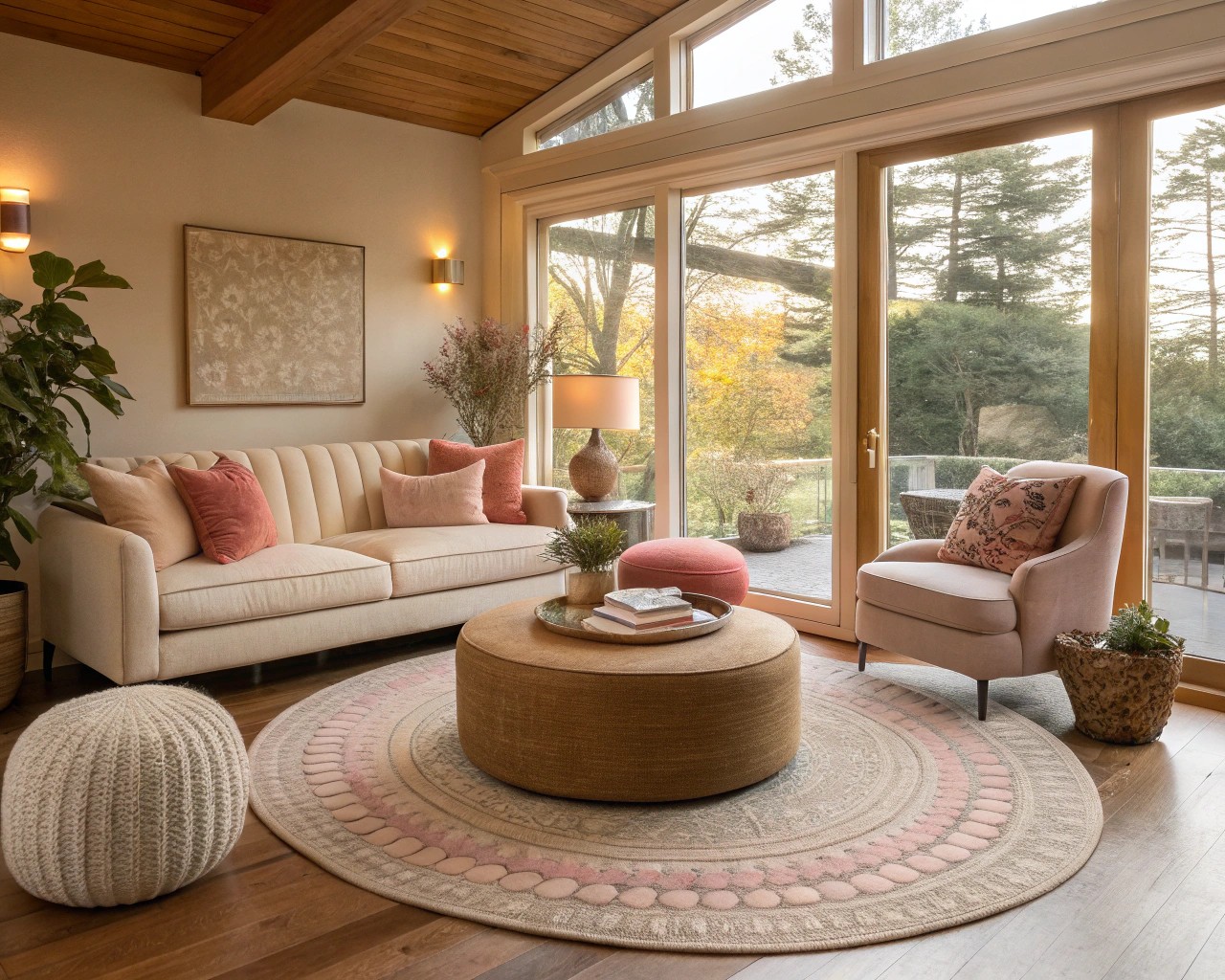
Sharp angles and harsh lines can create subconscious stress, particularly for individuals in vulnerable states. Curved forms feel inherently safer, reducing anxiety and promoting relaxation through their organic, non-threatening appearance.
Research in healthcare settings reveals that curved furniture and architectural elements significantly reduce aggressive behaviors and promote calm interactions. This principle applies equally to residential healing spaces, where rounded forms create environments that feel protective rather than confrontational.
Implementing Curved Elements
Furniture with Healing Curves:
- Coffee tables: Round or oval shapes prevent injury and create flow
- Seating: Curved backs and arms provide physical and psychological embrace
- Storage: Rounded corners on cabinets and shelving units
- Lighting: Curved lamp bases and soft-edged shades
Organic Architectural Features
When possible, incorporate architectural elements that mirror nature’s flowing forms. These might include arched doorways, curved built-in seating, or rounded window frames that soften harsh structural lines.
Safe Design Principles:
- Eliminate sharp corners where possible
- Choose furniture with visible structural stability
- Ensure clear sightlines throughout spaces
- Create multiple exit routes in room layouts
- Position furniture to avoid creating closed-off corners
Material Safety Considerations
Beyond shape, material selection impacts both physical and psychological safety. Avoid materials that might splinter, chip, or create sharp edges over time.
Safe Material Choices:
- Solid wood with rounded edges over particle board
- Metal with powder-coated finishes rather than raw edges
- Glass with rounded corners and safety treatments
- Fabrics without loose threads or decorative elements that might snag
Creating Sensory Balance for Optimal Healing
Visual Rest and Gentle Stimulation
Healing spaces require careful balance between visual interest and overstimulation. The goal is creating environments that engage without overwhelming, providing what environmental psychologists call “soft fascination”.
Achieving Visual Balance:
- Use the 60-30-10 color rule: 60% neutral, 30% secondary, 10% accent
- Incorporate natural patterns like wood grain or stone veining
- Limit decorative elements to meaningful, calming pieces
- Ensure adequate white space between visual elements
- Choose artwork with soft, nature-inspired imagery
Lighting for Circadian Health
Natural light regulation proves crucial for healing, supporting healthy sleep cycles and mood regulation. When natural light is limited, artificial lighting must compensate thoughtfully.
Healing Light Strategies:
- Maximize natural light with light-colored window treatments
- Use full-spectrum bulbs during daytime hours
- Install dimmer switches for evening light control
- Position task lighting to avoid harsh shadows
- Consider circadian lighting systems for long-term recovery spaces
Air Quality and Natural Ventilation
Often overlooked, air quality significantly impacts both physical healing and psychological comfort. Fresh air circulation and natural ventilation contribute to the sense of vitality essential for recovery.
Air Quality Improvements:
- Position furniture to encourage natural airflow
- Choose low-VOC paints and finishes
- Incorporate air-purifying plants when appropriate
- Ensure adequate ventilation in all spaces
- Use natural materials that don’t off-gas harmful chemicals
Room-by-Room Application Guide
Bedroom Sanctuaries
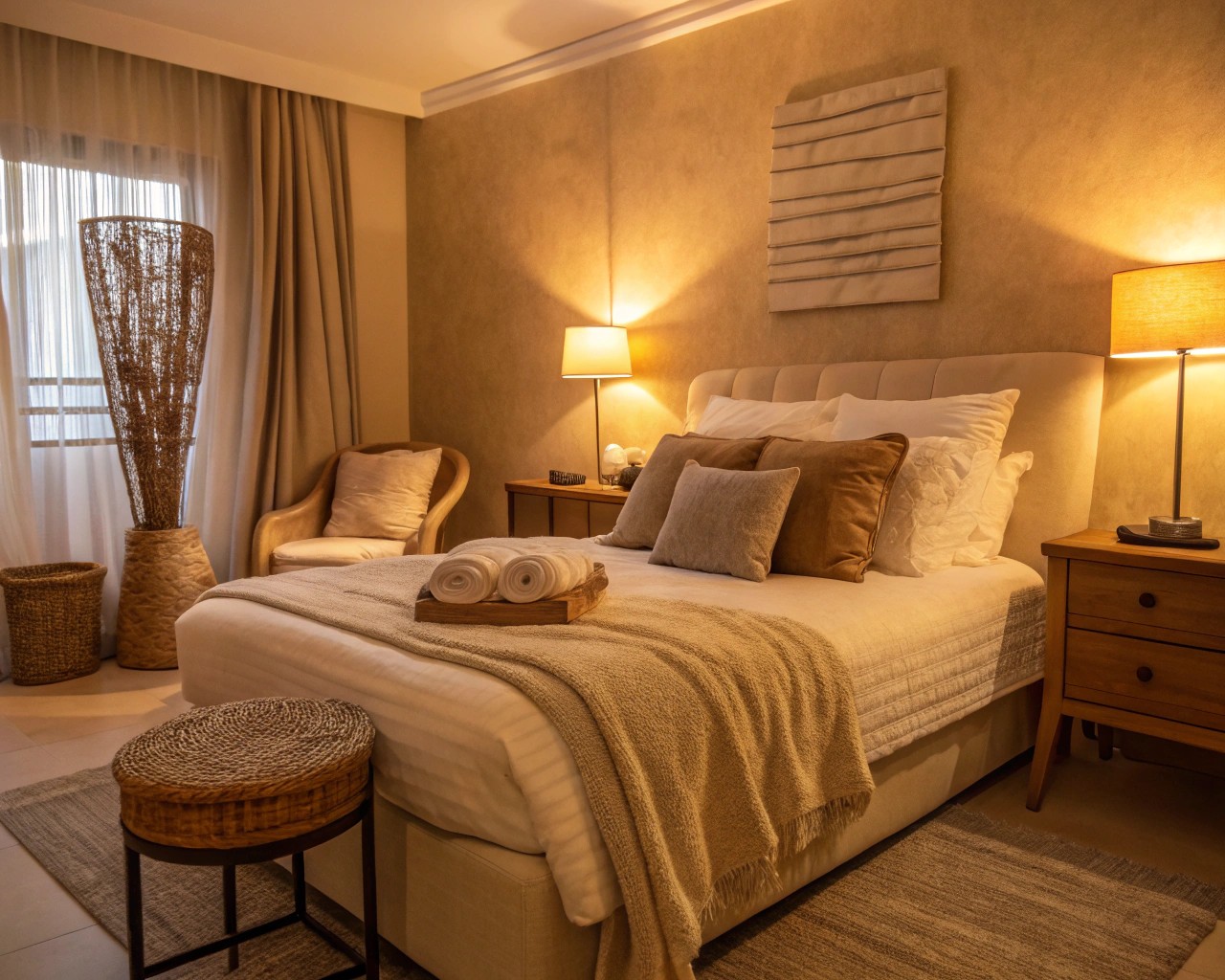
The bedroom serves as the primary healing space, requiring extra attention to creating calm, restorative environments that support quality sleep and peaceful rest.
Essential Bedroom Elements:
- Soft, muted wall colors in blues or greens
- Blackout curtains in natural fabrics
- Curved headboard with soft upholstery
- Rounded nightstands without sharp corners
- Organic cotton or bamboo bedding
- Soft area rugs beside the bed
I often recommend creating a “nest-like” feeling in bedrooms, with curved elements and soft textures that provide psychological safety. This might include a curved reading chair in the corner or rounded floating shelves instead of sharp-edged alternatives.
Living Spaces for Gentle Activity
Living areas should encourage gentle movement and social connection while maintaining the calm necessary for healing. These spaces need to be flexible enough for various activities while preserving therapeutic qualities.
Living Room Healing Design:
- Curved sectional seating arrangements
- Round coffee tables with soft edges
- Natural fiber throw pillows and blankets
- Soft, indirect lighting options
- Easy-to-clean surfaces in calming colors
- Clear pathways between furniture pieces
Bathroom Wellness Retreats
Bathrooms often get overlooked in healing design, yet they’re spaces where individuals spend private, vulnerable moments. These rooms should feel spa-like and nurturing rather than clinical.
Therapeutic Bathroom Features:
- Soft mint or sage green color schemes
- Curved vanity edges and rounded mirrors
- Natural fiber bath mats and towels
- Soft, warm lighting around mirrors
- Easy-grip hardware with rounded edges
- Non-slip surfaces with subtle texture
Practical Implementation Strategies
Budget-Conscious Healing Design
Creating healing environments doesn’t require extensive renovation or expensive furnishings. Many therapeutic elements can be achieved through thoughtful selection of accessories and minor modifications.
Low-Cost High-Impact Changes:
- Paint walls in healing colors (under $100 per room)
- Add soft throw pillows and blankets ($50-200)
- Replace harsh light bulbs with warm LEDs ($20-50)
- Introduce rounded decorative elements ($30-150)
- Incorporate air-purifying plants ($25-100)
Temporary Healing Spaces
Sometimes healing design needs to be temporary or portable, such as when staying in guest rooms or healthcare facilities. Focus on easily transportable elements that provide immediate comfort.
Portable Comfort Kit:
- Soft throw blanket in calming color
- Comfortable pillow with washable cover
- Battery-operated warm LED light
- Essential oil diffuser with calming scents
- Smooth worry stones or comfort objects
Maintenance and Evolution
Healing spaces need to evolve as recovery progresses. Design flexibility into these environments, allowing for gradual changes that reflect improving health and changing needs.
Adaptive Design Strategies:
- Choose modular furniture that can be rearranged
- Use removable wallpaper or paint for easy color changes
- Select accessories that can transition to different rooms
- Plan for adding energizing elements as healing progresses
- Consider seasonal adjustments to maintain freshness
